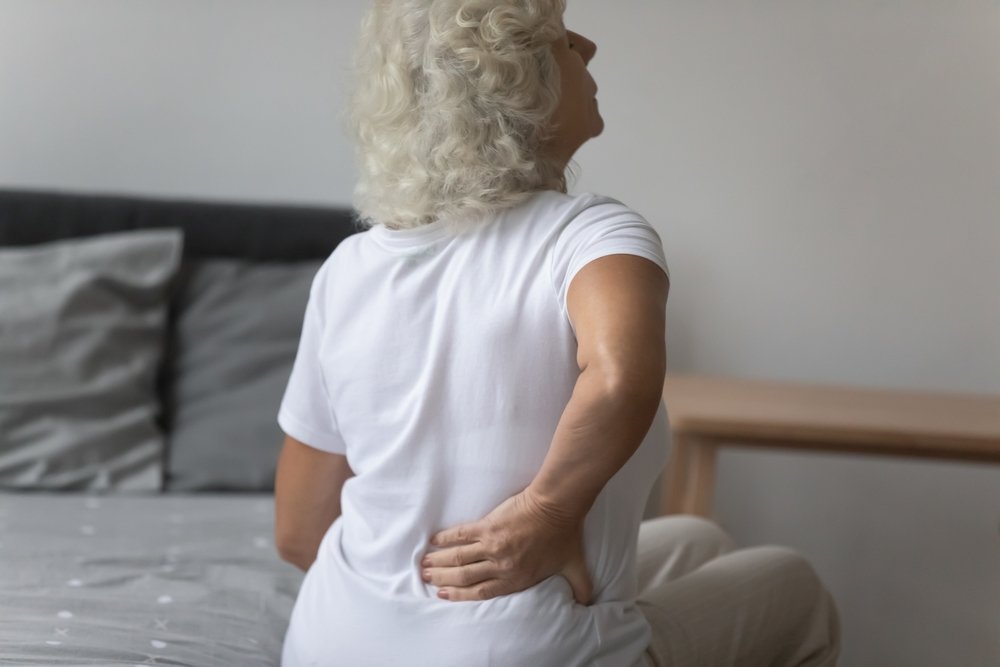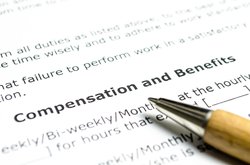 Spinal stenosis occurs when the spaces within your spine narrow, putting pressure on the nerves that travel through the spine. This narrowing can cause severe back pain, particularly in the lower back and referring leg pain.
Spinal stenosis occurs when the spaces within your spine narrow, putting pressure on the nerves that travel through the spine. This narrowing can cause severe back pain, particularly in the lower back and referring leg pain.
At Barrington Orthopedic Specialists, our spine specialists -- including Dr. Belcher, Dr. Rabinowitz, Dr. Tashima, and Dr. Zhang -- are highly experienced in diagnosing and treating spinal stenosis. If you are experiencing back pain, it is important to determine whether or not you have spinal stenosis so that appropriate treatment can be provided.
Don't wait—schedule a consultation with Barrington Orthopedic Specialists in Schaumburg, IL, to determine the cause and get the appropriate care.
What is Spinal Stenosis?
Spinal stenosis is a condition characterized by the narrowing of the spaces within the spinal column, which can compress the nerve roots and spinal nerves, causing pain and discomfort. While this narrowing usually happens in the lumbar (lower) spine, causing low back pain, it can also occur in the cervical (upper) spine, leading to neck pain.
What Causes Spinal Stenosis?
The primary causes of spinal stenosis include degenerative disc disease, osteoarthritis, and the thickening of ligaments in the spine. Injuries, herniated discs, and the overgrowth of bone can further contribute to the narrowing of the spinal canal, affecting the nerve roots. Other risk factors include age, genetics, and congenital spinal conditions. Additionally, activities or injuries that put excessive strain on the spine, such as heavy lifting or muscle strain, can exacerbate the issue.
Who Is At Risk for Spinal Stenosis?
Spinal stenosis is most prevalent in older adults due to the natural aging process that leads to degenerative changes in the spine. Individuals over the age of 50 are at a higher risk, with the condition affecting both men and women. Though less common, younger individuals can also develop spinal stenosis, particularly if they have a history of spinal injuries or genetic predispositions to spinal abnormalities.
Understanding spinal stenosis and its associated risk factors is essential for early diagnosis and effective treatment, which can help alleviate symptoms and improve quality of life. If you suspect you may have spinal stenosis, consult with a spine specialist for a comprehensive evaluation and treatment plan.
Symptoms of Spinal Stenosis
Common symptoms of spinal stenosis include neck or lower back pain, numbness, tingling, and weakness. The pain occurs when the narrowing of the spinal canal compresses the nerves, leading to discomfort that can persist for a few weeks or become chronic.
In cases of chronic back pain, patients may experience muscle spasms and a consistent ache in the affected area.
- Lumbar Spine: When spinal stenosis affects the lower back or lumbar spine, symptoms may include chronic low back pain, numbness or tingling in the legs, and muscle weakness. Patients often find it difficult to stand or walk for extended periods and may need to lean forward or sit to alleviate discomfort.
- Cervical Spine: If the stenosis is located in the neck, individuals may experience pain radiating through the shoulders, arms, and hands. Numbness and weakness in the upper extremities are common, which can lead to difficulties in performing tasks that require fine motor skills.
- Thoracic Spine: Though less commonly affected, spinal stenosis in the mid-back can cause pain around the rib cage and abdomen. This may result in a sensation of tightness or band-like pain across the chest.
The symptoms of spinal stenosis can significantly impact daily activities, making simple tasks challenging. Chronic back pain and muscle spasms can limit mobility, restricting activities such as walking, standing, and lifting. Numbness and weakness in the legs or arms can impair balance and coordination, increasing the risk of falls. For many, the need for frequent rest breaks can interrupt daily routines and reduce overall quality of life.
Diagnosing Spinal Stenosis
Accurately diagnosing spinal stenosis is a multifaceted process that involves several key steps:
Medical History
The diagnostic journey begins with a detailed medical history. Your spine specialist will inquire about your symptoms, including the onset, duration, and intensity of your back pain. They will also ask about any previous injuries, medical conditions, and family history of spinal disorders to identify potential risk factors. Chronic pain patterns and activities that exacerbate or relieve discomfort will be carefully noted.
Physical Examination
A comprehensive physical examination follows, during which the specialist evaluates your posture, range of motion, and physical strength. They will check for signs of nerve compression, such as numbness, tingling, and muscle weakness. Tests to assess your balance, coordination, and reflexes are also conducted to determine the impact on your neurological function.
Imaging Tests
To confirm the diagnosis, imaging tests are essential. Common imaging modalities used include:
X-rays: These provide a clear view of the bone structures in the spine and can reveal narrowing of the spinal canal, bone spurs, and alignment issues.
- Magnetic Resonance Imaging (MRI): MRI scans offer detailed images of the soft tissues, including discs, ligaments, and nerves, helping to pinpoint the exact location and extent of nerve compression.
- Computed Tomography (CT) Scans: CT scans provide cross-sectional images of the spine and can be particularly useful in visualizing the bony structures and any abnormalities.
Importance of Accurate Diagnosis
Accurate diagnosis of spinal stenosis is critical for effective treatment and symptom management. Misdiagnosis or confusion with other conditions, such as herniated discs, arthritis, or peripheral neuropathy, can lead to inappropriate treatment and prolonged suffering. Chronic pain that persists despite standard treatments may indicate underlying spinal stenosis, necessitating thorough evaluation by a specialist.
If you suspect you may have spinal stenosis, obtaining a precise diagnosis is vital for developing a tailored treatment plan that addresses the root cause of your pain. Schedule a consultation with Barrington Orthopedic Specialists to ensure an accurate diagnosis and explore appropriate treatment options.
Treatment Options for Spinal Stenosis
Non-Surgical Treatments
For many patients with spinal stenosis, non-surgical treatments can effectively manage symptoms and improve quality of life. Common non-surgical options include:
- Physical Therapy: A customized physical therapy program can help to strengthen the muscles supporting the spine, improve flexibility, and reduce pain. Physical therapists may teach specific exercises and techniques to improve posture and alleviate pressure on the spinal nerves.
- Medications: Over-the-counter pain relievers can help manage mild to moderate pain. In some cases, doctors may prescribe stronger pain medications, muscle relaxants, or anti-inflammatory drugs like ibuprofen or naproxen to reduce nerve inflammation and pain.
- Injections: Epidural steroid injections can provide relief by reducing inflammation around the compressed nerves.
Surgical Options
When non-surgical treatments fail to provide adequate relief, surgical intervention may be necessary. Surgical options aim to relieve pressure on the spinal cord or nerves and include:
- Laminectomy: This procedure involves removing the lamina, a part of the vertebra, to create more space within the spinal canal. It helps to decompress the spinal cord or nerves and reduce symptoms.
- Spinal Fusion: This surgery aims to stabilize the spine and relieve pain by fusing one or more vertebrae together, reducing movement and pressure on the affected nerves.
Role of Patient Lifestyle Changes in Managing Symptoms
In addition to medical and surgical treatments, certain lifestyle changes can play a significant role in managing spinal stenosis symptoms:
- Regular Exercise: Engaging in regular low-impact exercises, such as walking, core strengthening, and flexibility exercises.
- Proper Lifting Techniques: Avoiding heavy lifting and practicing proper techniques can prevent unnecessary strain on the back.
- Weight Management: Maintaining a healthy weight reduces stress on the spine and can alleviate pain.
- Ergonomics: Using supportive chairs, mattresses, and ergonomic workspaces can minimize strain on the spine during daily activities.
- Rest and Activity Balance: Alternating periods of rest with physical activity can help manage pain and prevent stiffness.
These lifestyle changes, combined with appropriate medical treatments, can significantly improve symptoms and the overall quality of life for individuals with spinal stenosis. If pain persists or worsens, it is crucial to consult with a specialist to explore further treatment options.
When to See a Spine Specialist
If you suspect you might have spinal stenosis, timely medical intervention is crucial. Early consultation with a spine specialist can significantly reduce the risk of long-term complications and improve treatment outcomes. Specific symptoms that warrant immediate attention include:
- Severe Pain: If you experience intense, unrelenting pain in your back or legs that doesn't improve with over-the-counter medications or rest, it's essential to see a doctor.
- Chronic Back Pain: Persistent back pain lasting more than a few weeks should not be ignored, especially if it interferes with daily activities or sleep.
- Bladder Problems: Issues such as difficulty urinating, loss of bladder control, or frequent urinary infections can be signs of nerve compression and require urgent medical evaluation.
- Leg Pain: Experiencing significant or worsening leg pain, particularly if accompanied by numbness, tingling, or weakness, indicates potential nerve involvement and necessitates prompt medical assessment.
- Acute Back Pain: Sudden and severe back pain, especially if it follows an injury or trauma, should be examined by a healthcare professional immediately.
Addressing these symptoms without delay can help to manage spinal stenosis effectively and prevent further deterioration. Early diagnosis and intervention are vital for developing a tailored treatment plan that mitigates pain and improves quality of life. For specialized care, consult with Barrington Orthopedic Specialists to receive an accurate diagnosis and explore appropriate treatment options based on your condition.
Visit Your Greater Chicago Spine Specialists
Receiving expert medical advice is crucial in managing spinal stenosis effectively and ensuring an accurate diagnosis.
At Barrington Orthopedic Specialists, our experienced spine specialists provide comprehensive evaluations and personalized treatment plans tailored to your unique needs. By consulting with our team, you benefit from a wealth of expertise and a commitment to enhancing your quality of life through both non-surgical and surgical treatment options.
Don't let spinal stenosis hinder your life any longer. Schedule your appointment for a thorough evaluation with our spine specialists.
